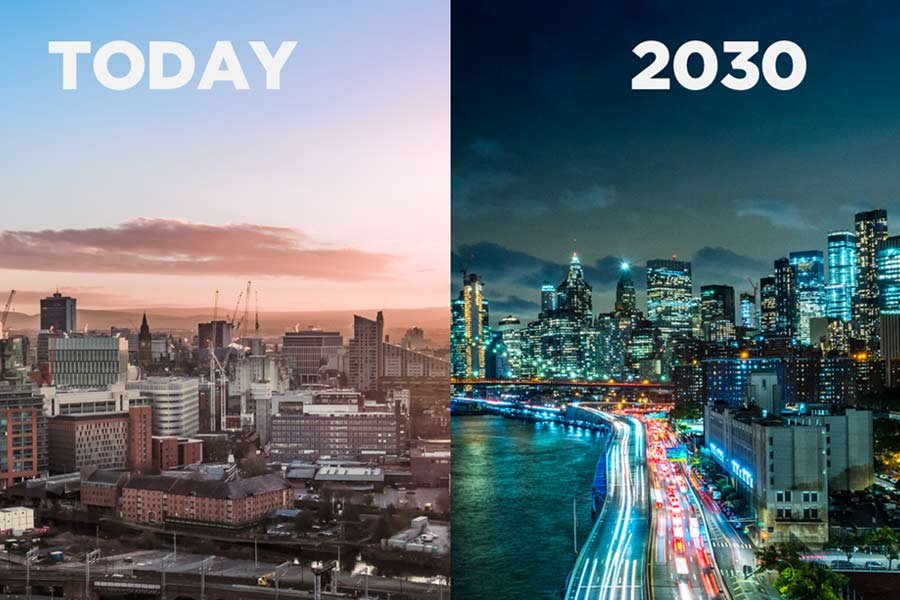Meeting the Challenges of the 2020’s
The media landscape is evolving rapidly, presenting both challenges and opportunities for leaders and programming creators. While this focuses on news, it’s applicable across most of media
Here we explore some general thoughts on media evolution and emphasizes the need for adaptation and innovation in order to meet the demands of the 2020s. It highlights the importance of embracing change, re-educating ourselves, and breaking away from outdated norms to create a new generation of information presentation.
The Intersection of Media Change:
The present moment marks the most dramatic intersection of media change in history. Programmers and leaders have a choice: either stay on the old road and risk age-out or cultural irrelevance, or embrace the media revolution that is happening right now. Online platforms and emerging technologies have the power to transform the way we consume and advertise media. This is not something to be taken lightly, as news itself is not immune to these changes.
Attacking Denial:
It is not enough to blame the slow economy for the challenges faced by the media industry. We must also recognize the need to adapt to the cultural shifts happening around us. Denying the need for change will only hinder progress. Gimmicks, giveaways, and promotional tricks are not enough to compete in a world experiencing technological advancements, demographic shifts, and radical cultural swings.
Changing Our Thinking/Re-education:
In order to thrive in the 2020s, we must retool and re-educate our people to deal with the present reality. Many of us are still rooted in outdated thinking, and this new century demands a fresh approach. It is time to step back, let go of the self-congratulatory rhetoric, and engage with the emerging world. Accepting the challenges of our era and generating forward-thinking ideas will be infinitely more productive and satisfying.
Breaking Free from the TV Style:
There are no regulations limiting broadcasters to a standard cadence, style, or look. It is crucial to move away from the standard TV style and think beyond it. The current approach is out of sync with 21st-century America. Just as "Google" and "Bluetooth" have become part of our vocabulary, there is a whole new vibe to what engages people. It is time to create the next generation of information presentation.
The "TV Style": Small Thinking in the Age of Big Ideas:
While we pay attention to critical areas such as sales and technology, we often overlook the importance of art in television. Art is a powerful tool to compete with, but it is rarely part of the discussion in TV. We need to incorporate art into our broadcasts, as it can stimulate the senses and take people to new places. Painting pictures with words is a highly effective way to engage viewers and create a memorable experience.
Casting Stations: Liberating the Thinkers:
To foster innovation, we must allow creative people with good ideas to thrive, free from the constraints of tradition. There is a perception that those with new ideas face barriers within the industry. We need to cast the right people in the right roles and allow them to focus on their areas of expertise. Resting on old designs during a time of rapid change is counterproductive. We must have the right cast and script to deliver a truly compelling experience.
The Intellectual Scale:
It is essential to understand where we fall on the intellectual scale. If we claim to be about credible news, but present it in a manner more suited to a lowbrow entertainment show, we are undermining our own credibility. We must align our presentation style with our intended message to avoid confusing our audience.
The Complete Video Experience:
Rather than focusing on one-dimensional content, we should aim to create a complete video experience. As part of the entertainment/information business, we must embrace innovation and reinvention. A brash, outdated approach will not resonate with audiences who are seeking new and immersive experiences.
Building a 21st Century Culture:
Internally, we must cultivate a culture that embraces the multi-media nature of the 21st century. Our buildings should be an oasis of innovation, fostering sales opportunities and creating an environment conducive to change. A tired, tedious, and restrictive culture will hinder progress. We must catch up and sync up with the new mainstream in order to evolve and thrive.
Conclusion:
The media landscape is continually evolving, and broadcasters must adapt to stay relevant. Embracing change, re-educating ourselves, and breaking away from outdated norms are crucial steps to meeting the challenges of the 2020s. By creating a culture of innovation and embracing new ideas, we can revolutionize the way information is presented and create a truly engaging and impactful media experience.
